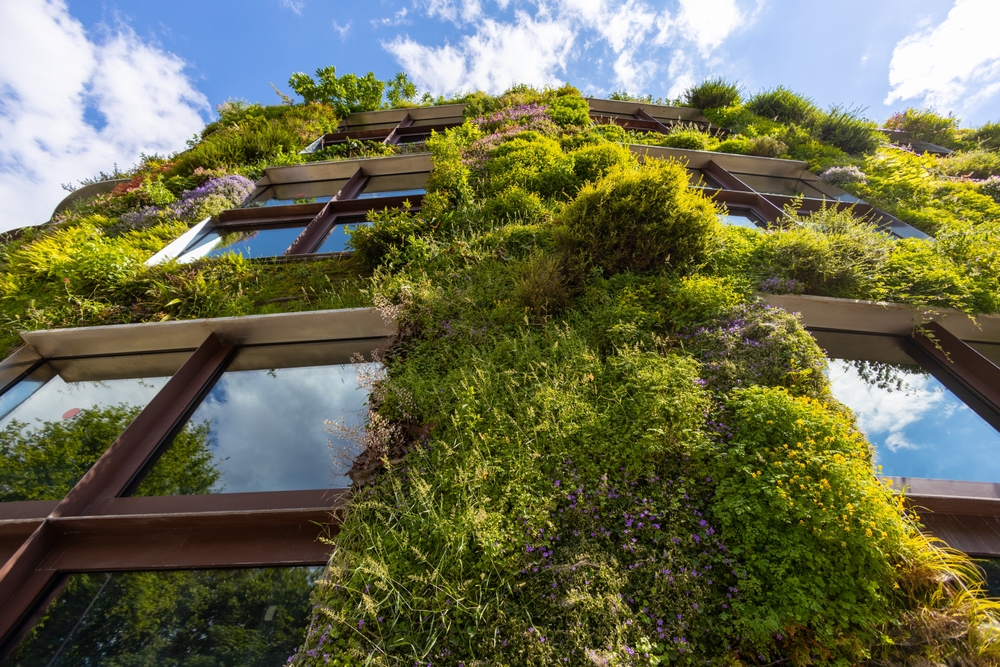Welcome! Today, we’re diving into the lush world of Green Facades—those walls of greenery you may have seen in modern buildings or eco-friendly cities. You might be thinking, “So it’s just plants on a building, right?” Well, not exactly.
A green facade does much more than add a little leafy charm to a concrete jungle. It cools down buildings, purifies the air, and provides a haven for urban biodiversity. Let’s take a closer look at what green facades are, why they’re making waves in architecture, and how they could fit into your future projects or investments.
What is a Green Facade?
A green facade is like nature’s carpet draped over a building, turning bare walls into lush, vibrant canvases. Unlike indoor vertical gardens or green walls, green facades use climbing plants—like ivy, ferns, or flowering vines—that grow directly on or near a building. Over time, they create an exterior layer of greenery that adapts to the structure’s surface.
Why Are They So Popular?
With climate change and urbanization on the rise, architects and city planners are rethinking how to bring more nature into our lives. Green facades aren’t just beautiful; they’re practical. They reduce the heat a building absorbs, purify the air, and even provide a bit of natural insulation. Plus, they’re often cheaper and more eco-friendly than other building modifications, like re-painting or installing additional air conditioning.
Benefits of Green Facades
1. Natural Insulation and Energy Efficiency
Think of a green facade as a natural blanket for your building. Plants absorb heat, which keeps the building cooler in the summer. This can significantly reduce energy bills as it minimizes the need for air conditioning.
- Energy Savings: By shading the walls and absorbing sunlight, green facades help maintain a steady indoor temperature. Some studies show that green facades can reduce surface temperatures by up to 10°C!
- LEED Certification: For those looking to improve their building’s green credentials, green facades can contribute points toward LEED certification, a globally recognized symbol of sustainability.
2. Improved Air Quality and Biodiversity
Plants are like nature’s air purifiers. They absorb pollutants and emit oxygen, making the air cleaner and fresher. Not to mention, they provide a much-needed oasis for city-dwelling birds and insects, contributing to urban biodiversity.
- Bio-filtration: Plants filter out particulates and gases, creating a cleaner environment.
- Urban Ecosystem Support: Green facades serve as a natural habitat for birds, insects, and other wildlife in the city.
3. Psychological and Aesthetic Appeal
Who doesn’t love a splash of green in the middle of a concrete jungle? Green facades have been shown to boost mental health by reducing stress and improving mood. Plus, they add beauty and value to any structure.
- Improved Property Value: A building with a green facade isn’t just unique—it’s desirable.
- Mental Health Benefits: Studies show that green spaces can reduce anxiety, so imagine the impact on a workspace or home.
Types of Green Facade Systems
Green facades can be categorized into several systems, each suited to different building styles and purposes. Let’s explore the main ones:
1. Direct Green Facades
In direct systems, plants grow directly on the building’s exterior walls, usually without any support systems. Think of ivy-covered walls; the plants cling directly to the structure, creating a beautiful, old-world charm.
- Pros: Cost-effective and natural.
- Cons: Limited to certain plant types; potential damage to walls over time.
2. Indirect Green Facades
An indirect green facade involves a support structure, like a trellis or a cable system, which is installed a short distance from the wall. This prevents the plant’s roots and branches from damaging the building.
- Pros: Reduces wall damage, suitable for a wider variety of plants.
- Cons: Higher installation cost.
3. Hybrid Systems
Hybrid green facades use both direct and indirect techniques. They combine plants that grow directly on the wall with those supported by trellises or cables.
- Pros: Offers the best of both worlds.
- Cons: Complex installation, higher maintenance.
How to Plan a Green Facade Project
Thinking about installing a green facade? Here’s a step-by-step guide:
1. Evaluate the Building’s Structure
Not every building is suitable for a green facade. Assess the weight capacity of the walls and check for any water-related risks, as green facades can add moisture over time.
2. Choose the Right Plants
The choice of plants can make or break your project. For a low-maintenance option, go with hardy climbers like ivy or honeysuckle. If you want flowers, consider clematis or jasmine, but be prepared for seasonal changes.
3. Design a Support System
If you’re opting for an indirect or hybrid system, design the right support structure. Materials like stainless steel and treated wood are durable and weather-resistant.
4. Irrigation and Drainage Planning
Plants need water, but excess moisture can damage the building. Plan an irrigation system that delivers just enough water without creating a soggy mess. Automatic drip systems work well for most facades.
Maintenance Tips for Green Facades
Green facades are beautiful but they do need some TLC. Here are a few tips to keep yours thriving:
- Pruning: Regularly trim overgrown branches to prevent any strain on the support system or wall.
- Check for Pests: Regularly inspect plants for pests and treat them as needed. You don’t want any unwanted guests on your green facade!
- Watering: Even with an irrigation system, keep an eye on moisture levels to avoid over-watering.
Famous Green Facades Around the World
Here are some iconic green facades that have inspired architects and eco-warriors alike:
- Bosco Verticale in Milan, Italy: Known as the “Vertical Forest,” these twin towers feature over 900 trees and 20,000 plants.
- One Central Park in Sydney, Australia: This mixed-use development boasts a green facade with a heliostat that directs sunlight into the building.
- Oasia Hotel Downtown in Singapore: With over 21 species of climbing plants, this hotel is a true urban jungle.
The Future of Green Facades
As cities become more crowded and green space becomes scarce, green facades offer a promising solution. They don’t just beautify buildings; they play a crucial role in urban climate adaptation, reducing pollution, and supporting biodiversity.
Imagine a future where every city block has its own micro-forest, cooling buildings and providing fresh air. Green facades might just make that a reality!
FAQs
1. Do green facades require a lot of maintenance?
Not necessarily. Low-maintenance plants like ivy need only occasional trimming and irrigation. But, flowering facades may need a bit more care.
2. Can I add a green facade to my house?
Yes! Many residential buildings, especially standalone homes, can support a green facade. Consult an expert to assess wall strength and get advice on plant selection.
3. What’s the lifespan of a green facade?
With proper care, a green facade can last decades. However, some structures may need occasional repairs or updates to their support systems.
Green facades are more than just a trend—they’re a sustainable, beautiful solution to many urban challenges. So, if you’re planning a building project, considering an upgrade, or just want to add a splash of green to your life, why not go vertical? It’s a step toward a greener, cooler, and healthier world.
Let’s make every wall a part of nature’s masterpiece! 🌿


Leave a Reply